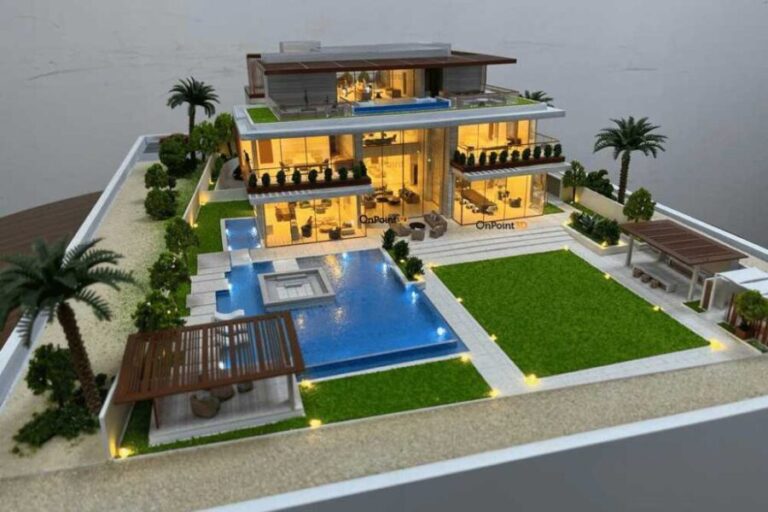
Understanding scale and proportion is fundamental in architectural model making, vital for accurately representing buildings and structures in three-dimensional form. Model making companies Dubai specialize in scaling down architectural designs to create physical models that convey size, spatial relationships, and design details effectively.
Scale in architectural model making:
Scale refers to the ratio between the dimensions of the model and the actual building or space it represents. It allows architects and designers to shrink down large structures into manageable sizes while maintaining proportional relationships. Common scales for architectural models include 1:50, 1:100, or 1:200, where one unit of measurement on the model corresponds to a larger number of units in real life.
Importance of scale:
- Accuracy: Using a consistent scale ensures that all elements within the model are accurately proportioned relative to each other and to the overall design.
- Visualization: Scale models provide a realistic representation of how a building or space will look in its intended environment, aiding in visualization and decision-making.
- Communication: Clients, stakeholders, and collaborators can better understand the size, layout, and spatial relationships of a design through a scaled model.
Proportion in architectural model making:
Proportion refers to the size and scale of individual elements within the model relative to each other. It involves balancing the sizes of doors, windows, walls, and other architectural features to maintain harmony and visual balance. Correct proportions contribute to the overall aesthetic appeal and functionality of the design.
Considerations for proportion:
- Human scale: Including scaled figures helps to illustrate how people interact with the space and provides a sense of the building’s usability and comfort.
- Detailing: Paying attention to proportional details such as window sizes, roof pitches, and structural elements improves the realism and authenticity of the model.
- Aesthetic balance: Proper proportion ensures that no single element dominates the design, creating a visually pleasing composition that reflects the architect’s intent.
Techniques for achieving scale and proportion:
- Use of scale rulers: Scale rulers are essential tools for converting real-world dimensions into model dimensions and vice versa. They ensure consistency and accuracy throughout the modeling process.
- Measurement and validation: Double-check measurements and proportions at each stage of model construction to avoid discrepancies and maintain fidelity to the original design.
- Mock-ups and iterations: Creating mock-ups or prototype models allows architects to test different scales and proportions before finalizing the design. It provides an opportunity to refine details and address any issues early on.

